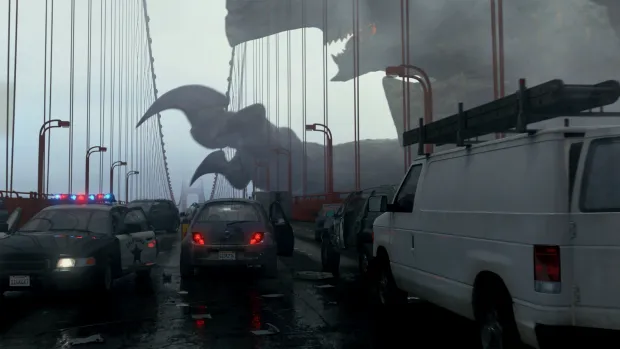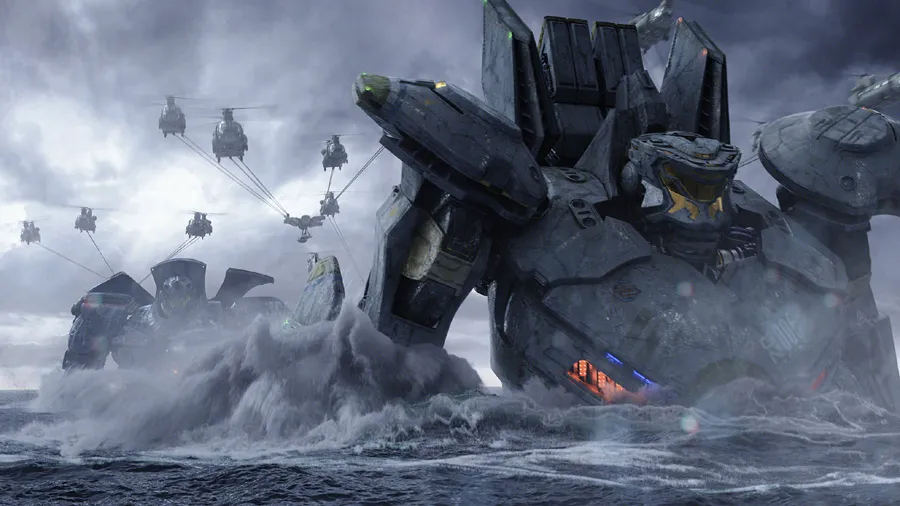Pacific Rim: A Summer Blockbuster with Powerful Action but Weak Everything Else
Turning a rift on the bottom of the Pacific Ocean into a passage between dimensions, inhabitants of a parallel world send giant monsters called “Kaiju” to Earth. To protect the planet, Earth governments build huge robots. At first, the combat vehicles successfully contain the monsters, but then the aliens begin to mutate rapidly. The more often the robots lose battles, the more the authorities become disillusioned with them. Finally, the project is curtailed – on the condition that the last four robots (American, Australian, Chinese, and Russian) and their pilots gather in Hong Kong and give the Kaiju one last fight.

Before Idris Elba was cast as the commander, producers hoped that Tom Cruise would lead the war against the Kaiju.
The Genesis of Giant Robots
When the Japanese started World War II, they believed that the samurai spirit could overcome everything. They were wrong. American aircraft carriers and Soviet tanks didn’t care how samurais smelled. When defeat in the war became inevitable, Japanese comic book artists came up with “scientific” weapons of retaliation – a giant fighting machine that would simply trample the enemies. Thus, the genre of “huge robots” was born, which after the war became the hallmark of Japanese mass culture. Over time, Eastern giants gained fans around the world, and 70 years after the first “giant” comic, Warner studio gave Guillermo del Toro almost $200 million for a fantastic blockbuster inspired by “big robots” in general and the animated series “Neon Genesis Evangelion” in particular.

A total of 40 different Kaiju were invented. Then del Toro selected the 9 scariest and most unusual for use in the film.
Action-Packed Spectacle
The Mexican director promised his fans an epic “melee,” and he did not deceive. Huge robots, giant monsters, skyscrapers flying to shreds… Grandiose battles in which plausible computer graphics and powerful sound effects merge. We recently saw something similar in “Transformers,” but “Rim” is an order of magnitude cooler than Michael Bay’s films. The only complaint is that in the final battle, which involves several combat vehicles and Kaiju, it is sometimes difficult to understand who is fighting whom (damn you, twilight!). It is also a shame that the Russian pilots look like idiots and that they have very little screen time. This is not the case when minus on minus gives a plus.
Disappointments Beyond the Action
In other respects, “Rim” disappoints, disappoints, and disappoints again. Especially against the background of the deep and inventive “Evangelion.” First of all, the complex mythology of the film forces the characters to explain to the audience for an hour what is happening. The Japanese usually break down such stories into a dozen and a half episodes. Del Toro crammed the action into two hours, and the confusion of “Rim” is manifested both in the overloaded picture of explanations and in the “cardboard” characters. After all, if the characters spend half the film stating facts and almost all the rest of the time fighting, how can they show themselves as people, and not tin soldiers? No way. And they remain dashing mannequins (albeit with tragedies in the past). Finally, “Rim” falls apart due to plot holes. Why, for example, build huge robots if you can simply block the rift from which the Kaiju climb with atomic mines? And why is the study of Kaiju carried out by one “crazy” scientist, and not a crowd of experts? Is there a more important task in the world than understanding monsters?